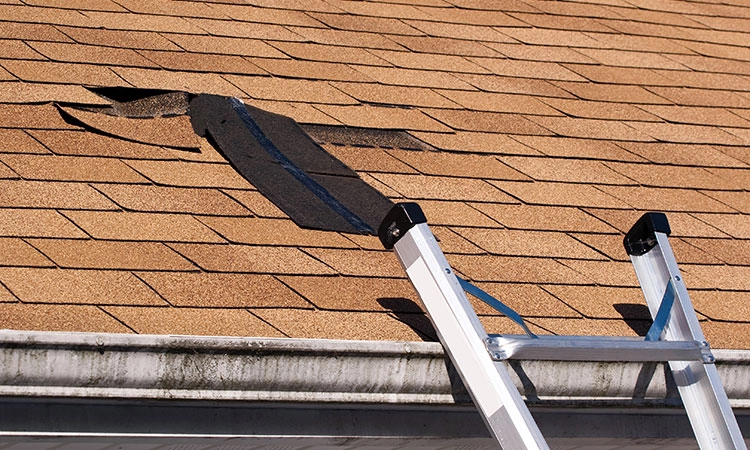A well-maintained roof is essential for protecting a home from the elements and ensuring long-term structural stability. Over time, exposure to harsh weather conditions, temperature fluctuations, and natural wear and tear can weaken roofing materials. While minor repairs can extend the life of a roof, there comes a point when a full replacement may be necessary. Identifying early warning signs can help homeowners address problems before they lead to costly damage.
Many homeowners overlook roofing issues until visible problems, such as leaks or missing shingles, appear. However, not all signs of roof damage are obvious. Issues like sagging, poor ventilation, and moisture buildup in the attic can indicate deeper structural concerns. Regular inspections and prompt repairs ensure that a roof remains functional and provides reliable protection against rain, wind, and snow.
This guide explores the key signs that indicate a roof may need repairs or replacement. Understanding these warning signals allows homeowners to take proactive measures, preserving the integrity of their roof and preventing unnecessary expenses. Whether dealing with an aging roof or unexpected storm damage, timely action is the best way to maintain a secure and efficient home.
Key Warning Signs That a Roof Needs Repair
1. Missing or Damaged Shingles
Shingles serve as the first line of defense against weather elements. When they are missing, cracked, or curling, the roof becomes vulnerable to leaks and further deterioration.
- High winds and storms can loosen or remove shingles.
- Sun exposure can cause shingles to become brittle and curl.
- Granule loss on asphalt shingles indicates aging and reduced protection.
Replacing damaged shingles promptly prevents moisture from seeping into the underlayment and causing structural damage.
2. Water Leaks and Stains on Ceilings
Leaks are one of the most common indicators of roof problems. Even small drips can lead to significant damage if left untreated.
- Water stains on ceilings and walls suggest a leak in the roofing system.
- Peeling paint or bubbling wallpaper may result from hidden moisture buildup.
- Mold or mildew growth in the attic can indicate prolonged roof leaks.
Leaks should be addressed immediately to prevent interior damage and potential structural weakening.
3. Sagging or Uneven Rooflines
A roof should have a straight and even appearance. Any visible sagging or dipping is a sign of underlying structural problems.
- Excess moisture can weaken the roof decking and cause sections to sag.
- Rotting support beams may no longer provide adequate stability.
- Heavy snow or debris accumulation can contribute to roof deflection.
A sagging roof may require extensive repairs or a complete replacement to restore its structural integrity.
When a Roof Replacement May Be Necessary
1. Age of the Roof
The lifespan of a roof depends on the materials used and environmental conditions.
- Asphalt shingle roofs typically last 20-30 years.
- Metal roofs can last 40-70 years with proper maintenance.
- Tile and slate roofs may exceed 50 years but require periodic inspections.
If a roof is approaching the end of its lifespan, replacement may be a more cost-effective option than frequent repairs.
2. Extensive Roof Damage from Storms
Severe weather events, such as hailstorms and heavy winds, can cause widespread roof damage.
- Large dents or punctures in roofing materials indicate impact damage.
- Wind-lifted shingles may compromise the roof’s waterproofing.
- Gutters filled with shingle granules suggest significant wear.
After extreme weather conditions, a professional inspection can determine whether repairs or a full replacement is necessary.
3. Recurring Roof Leaks Despite Repairs
If leaks persist even after multiple repairs, the underlying issue may be more extensive than surface damage.
- Poor flashing installation can lead to ongoing water penetration.
- A deteriorating underlayment may no longer provide adequate protection.
- Widespread roof deterioration can make repairs ineffective.
In cases where leaks continue despite repeated fixes, replacing the entire roof may be the best long-term solution.
Other Factors That Impact Roof Condition
1. Poor Roof Ventilation
Proper ventilation prevents moisture buildup and regulates attic temperatures.
- Inadequate airflow can cause condensation, leading to mold growth and wood rot.
- Heat buildup in the attic accelerates shingle deterioration.
- Ice dams may form in colder months, causing water to seep under shingles.
Ensuring proper ventilation extends the lifespan of a roof and prevents unnecessary repairs.
2. Mold and Algae Growth
Dark streaks or patches on a roof can indicate mold, algae, or moss buildup.
- Algae thrive in humid conditions, weakening roofing materials over time.
- Moss retains moisture, which can cause shingles to lift and decay.
- Mold can spread into interior spaces, affecting indoor air quality.
Cleaning and treating the affected areas can prevent further damage, but severe cases may require shingle replacement.
3. Damaged or Rusting Flashing
Flashing is installed around roof joints, vents, and chimneys to prevent water leaks.
- Corroded or loose flashing can allow moisture to seep into the home.
- Improperly sealed flashing may lead to long-term water damage.
- Bent or missing flashing should be repaired or replaced immediately.
Checking the condition of flashing helps prevent leaks and structural deterioration.
The Benefits of Professional Roof Inspections
1. Early Detection of Problems
Routine Roof Inspection Everett identifies minor issues before they become costly repairs.
- A professional roofing company can assess weak points and recommend necessary fixes.
- Inspections after storms or seasonal changes help detect hidden damage.
- Regular checkups prevent unexpected leaks and structural failures.
Annual inspections ensure a roof remains in top condition year-round.
2. Accurate Assessment of Roof Condition
Professionals can determine whether a roof needs repairs or a complete replacement.
- They evaluate the extent of wear and tear on shingles and underlayment.
- Structural integrity assessments help prevent safety hazards.
- Expert recommendations help homeowners make informed decisions.
A professional assessment provides clarity on the best course of action for roof maintenance.
3. Increased Roof Longevity
Consistent maintenance and timely repairs extend the life of a roof.
- Small fixes prevent larger, more expensive problems in the future.
- Proper sealing and reinforcement improve durability.
- A well-maintained roof enhances property value and energy efficiency.
Investing in routine inspections and repairs ensures long-term roof performance.
Conclusion
Recognizing the warning signs of roof damage allows homeowners to take action before issues escalate. From missing shingles to persistent leaks, identifying problems early helps prevent costly repairs and extends the lifespan of a roof. In some cases, minor repairs can restore functionality, but when damage is widespread or the roof has reached its lifespan, replacement may be necessary.
For homeowners seeking professional roofing solutions, Hometown Exteriors provides expert assessments and reliable roofing services. Taking proactive steps in roof maintenance ensures long-term protection, energy efficiency, and peace of mind.
Read More From Techbullion



































